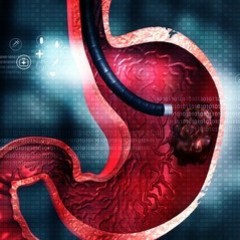Diagnostic UGI Endoscopy

Please click the questions below to reveal the answer
An Upper-Gastrointestinal (UGI) Endoscopy, also known as an Oesophago-Gastro-Duodenoscopy (OGD), is a procedure in which the upper digestive system is visualised with a fibre optic camera at end of a 9mm diameter flexible tube. It is performed in a bespoke endoscopy room, with a team of healthcare professionals supporting the endoscopist. A diagnostic endoscopy usually takes about 10 minutes to perform accurately.
An upper gastrointestinal endoscopy is used to diagnose and, sometimes, treat conditions that affect the upper part of your digestive system, including the oesophagus, stomach and duodenum.
An UGI endoscopy is the only investigation that allows visualisation and biopsy simultaneously and is therefore considered the gold standard investigation.
A barium meal is an x-ray test of the upper digestive system, which may miss small abnormalities and also does not allow for biopsy to confirm a diagnosis. It is now mostly used as a dynamic screening test to observe the function of the oesophagus and how it squeezes.
Prior to starting the procedure, local anaesthetic spray will be used to numb the back of the throat to eliminate the gag reflex and sedation is given to reduce your level of consciousness. The sedation can also cause amnesia and the majority of people have little recollection of the investigation. Sedation is not the same as a general anaesthetic, so you will not be fully asleep and you will be breathing on your own. A small mouth guard will be placed between your teeth to protect them. You will be asked to lie down on a table on your left hand side. Monitors often will be attached to your body. This will allow your health care team to monitor your breathing, blood pressure and heart rate.
Your consultant will place the endoscope into the mouth, down the food pipe (oesophagus), into the stomach and into the first part of the intestine (duodenum). On the way back, the upper digestive system will be gently expanded with air to allow for full visualisation of the lining to determine the presence of any abnormalities (photos will be taken). You may feel bloated during the procedure. Biopsies may be taken and these are extremely small and do not cause any pain. The endoscopy does not interfere with your breathing as your food passage is different to your airways. You should be able to breathe normally through your nose or mouth. On occasion you may get some suctioning at the back of the mouth to remove saliva.
You'll be taken to a recovery area after your endoscopy for approximately one hour. This allows your health care team to monitor you as the sedative begins to wear off. Once you recover you may feel mentally alert, but your memory, reaction times and judgment may be impaired if you have had sedation. You will need someone to drive you home. You may also need to take the day off from work. Don't make any important personal or financial decisions for 24 hours.
If you have had just the local anaesthetic with NO sedation, then you will be able to leave the hospital unaccompanied and resume normal activity such as driving and work.
Once you're at home, you may experience some mild discomfort such as, bloating and gas, cramping, sore throat. These signs and symptoms will improve with time.
An UGI endoscopy is a very safe procedure. Rare complications include:
Bleeding (1 in 5000 patients) - Your risk of bleeding complications after an endoscopy is increased if the procedure involves removing a piece of tissue for testing (biopsy) or performing a therapeutic treatment as part of the endoscopy. If bleeding occurs it can usually be terminated with endoscopic techniques.
Perforation (1 in 5000 patients) – Puncture of the digestive tract, which will require hospitalisation and further invasive intervention such as surgery to solve the problem. This risk increases with certain therapeutic endoscopic interventions such as dilatation.
Aspiration of food (4/10,000 patients)
Over Sedation – May require extra medication to reverse the effects of the sedation
You will be sent instructions to prepare for your endoscopy. You will need to stop drinking and eating four to six hours before your endoscopy to ensure your stomach is empty for the procedure. Tell your doctor about any blood thinning medications as you may need to stop it prior to the endoscopy.






